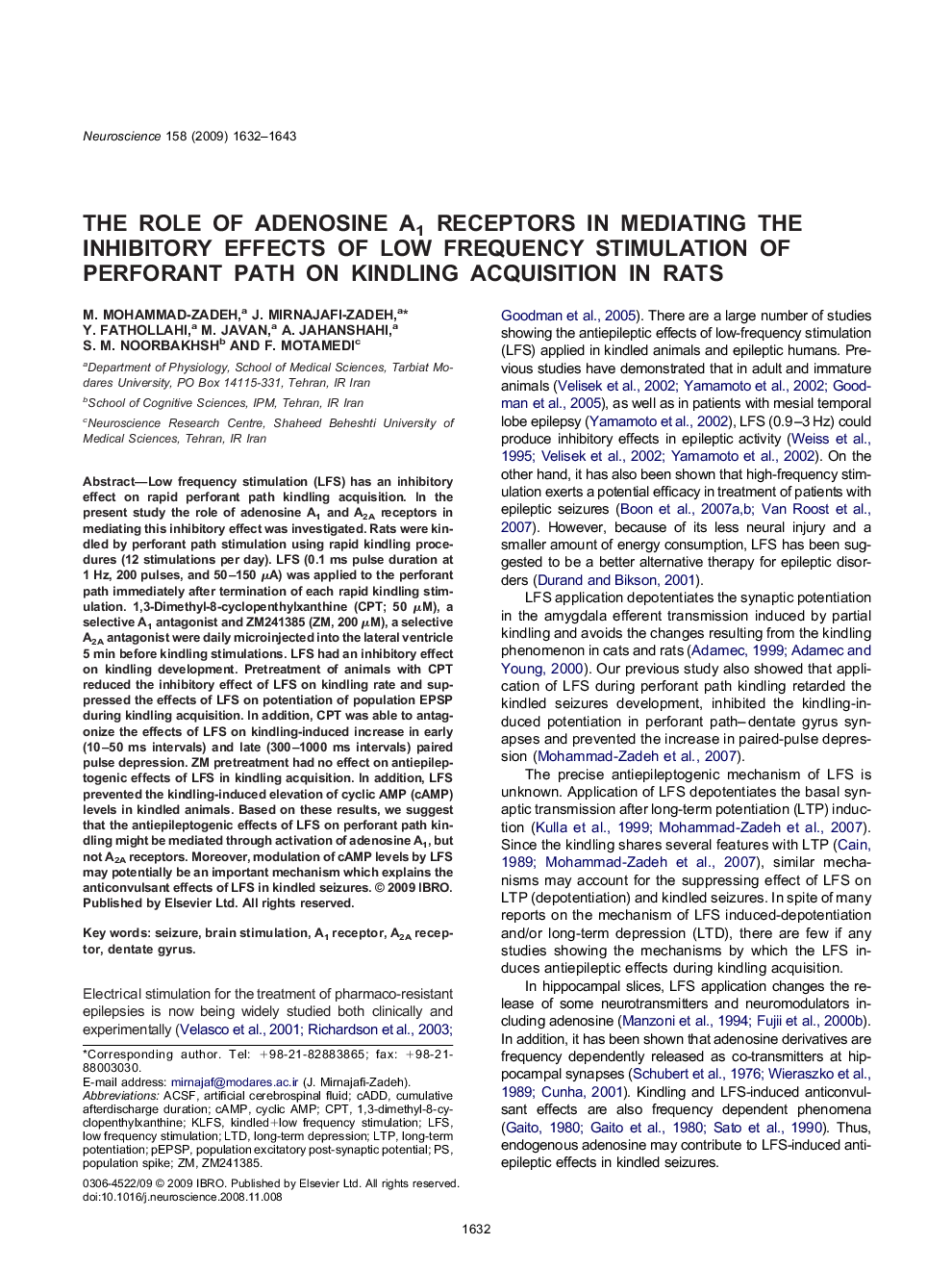| Article ID | Journal | Published Year | Pages | File Type |
|---|---|---|---|---|
| 4340310 | Neuroscience | 2009 | 12 Pages |
Abstract
Low frequency stimulation (LFS) has an inhibitory effect on rapid perforant path kindling acquisition. In the present study the role of adenosine A1 and A2A receptors in mediating this inhibitory effect was investigated. Rats were kindled by perforant path stimulation using rapid kindling procedures (12 stimulations per day). LFS (0.1 ms pulse duration at 1 Hz, 200 pulses, and 50-150 μA) was applied to the perforant path immediately after termination of each rapid kindling stimulation. 1,3-Dimethyl-8-cyclopenthylxanthine (CPT; 50 μM), a selective A1 antagonist and ZM241385 (ZM, 200 μM), a selective A2A antagonist were daily microinjected into the lateral ventricle 5 min before kindling stimulations. LFS had an inhibitory effect on kindling development. Pretreatment of animals with CPT reduced the inhibitory effect of LFS on kindling rate and suppressed the effects of LFS on potentiation of population EPSP during kindling acquisition. In addition, CPT was able to antagonize the effects of LFS on kindling-induced increase in early (10-50 ms intervals) and late (300-1000 ms intervals) paired pulse depression. ZM pretreatment had no effect on antiepileptogenic effects of LFS in kindling acquisition. In addition, LFS prevented the kindling-induced elevation of cyclic AMP (cAMP) levels in kindled animals. Based on these results, we suggest that the antiepileptogenic effects of LFS on perforant path kindling might be mediated through activation of adenosine A1, but not A2A receptors. Moreover, modulation of cAMP levels by LFS may potentially be an important mechanism which explains the anticonvulsant effects of LFS in kindled seizures.
Keywords
Related Topics
Life Sciences
Neuroscience
Neuroscience (General)
Authors
M. Mohammad-Zadeh, J. Mirnajafi-Zadeh, Y. Fathollahi, M. Javan, A. Jahanshahi, S.M. Noorbakhsh, F. Motamedi,
